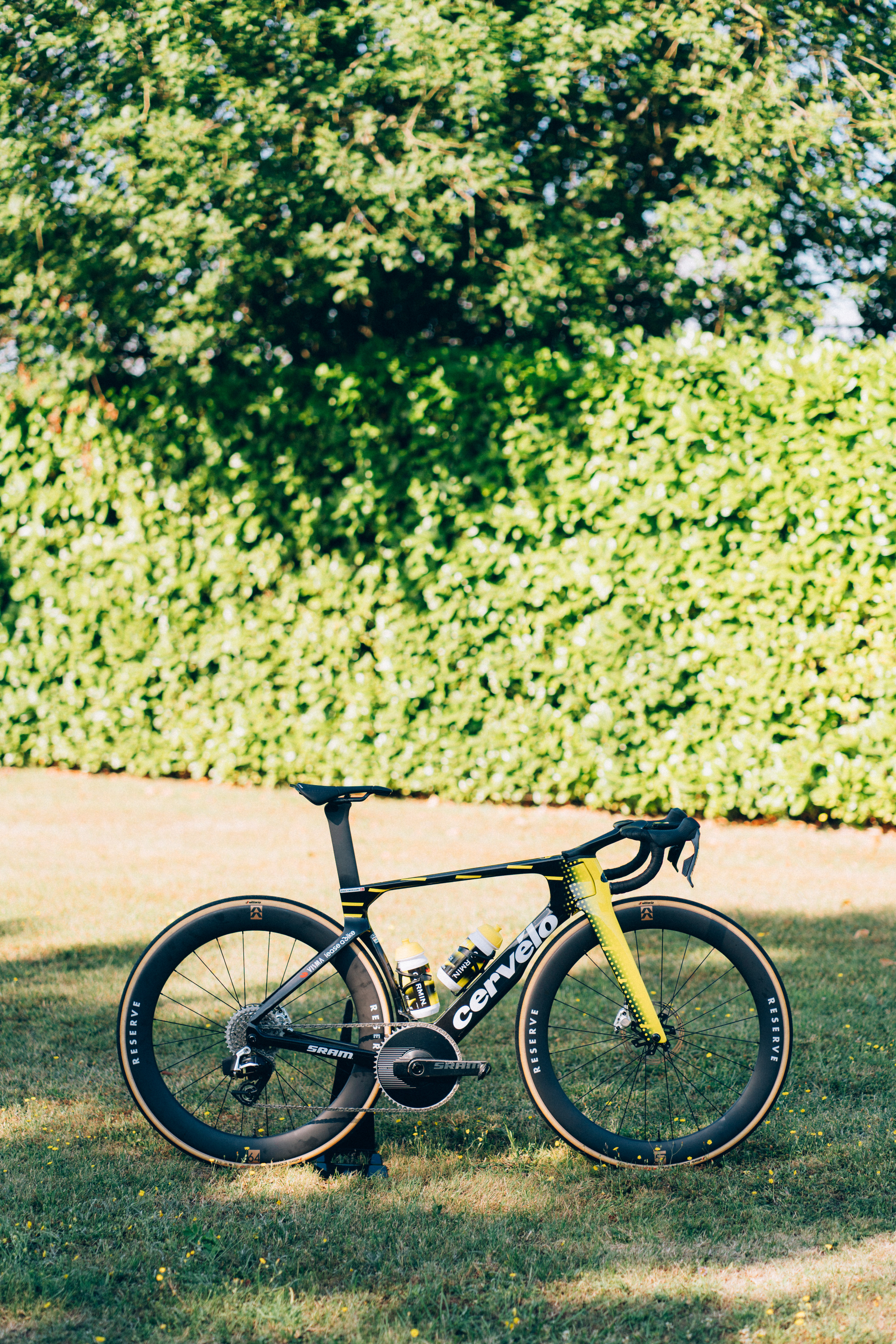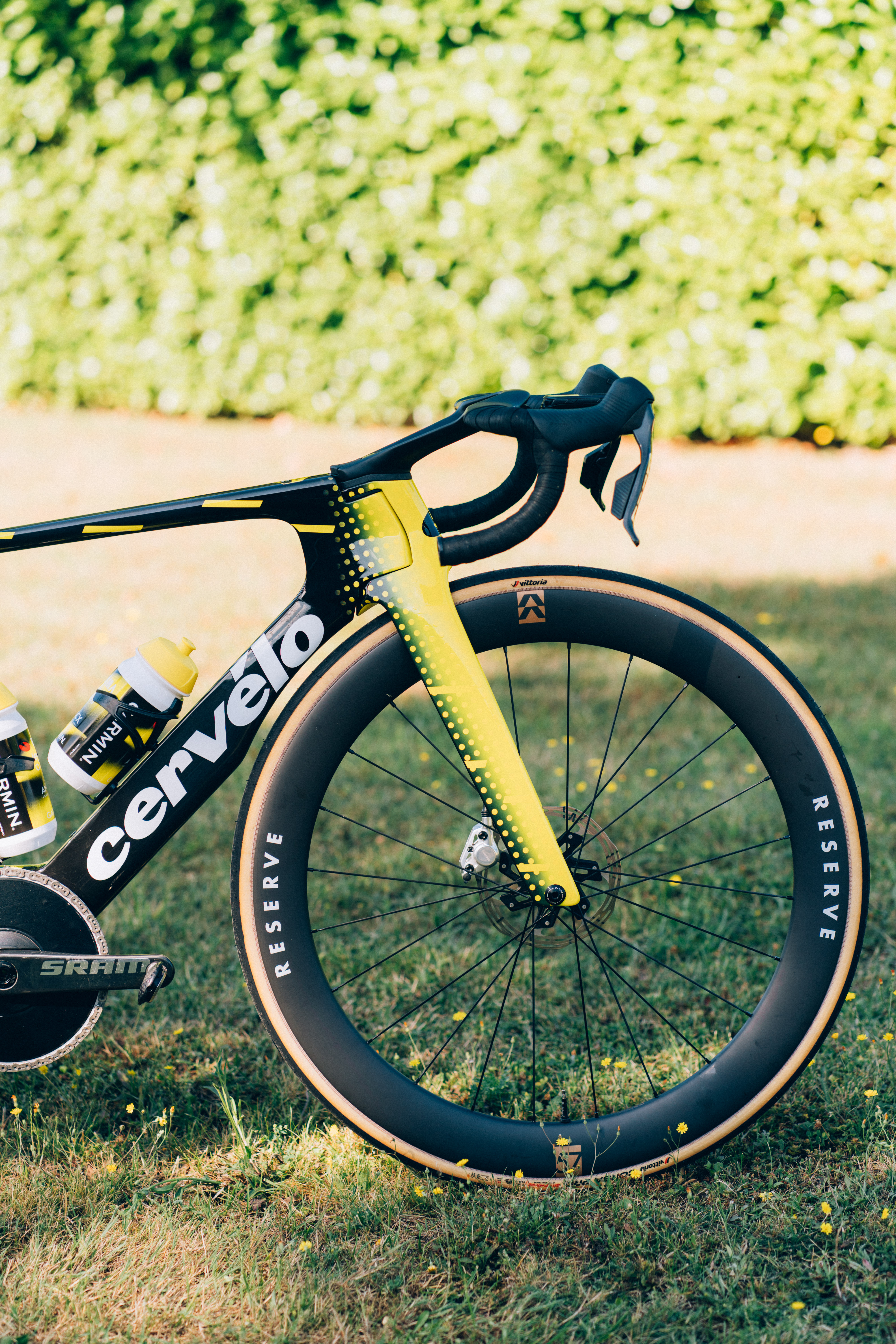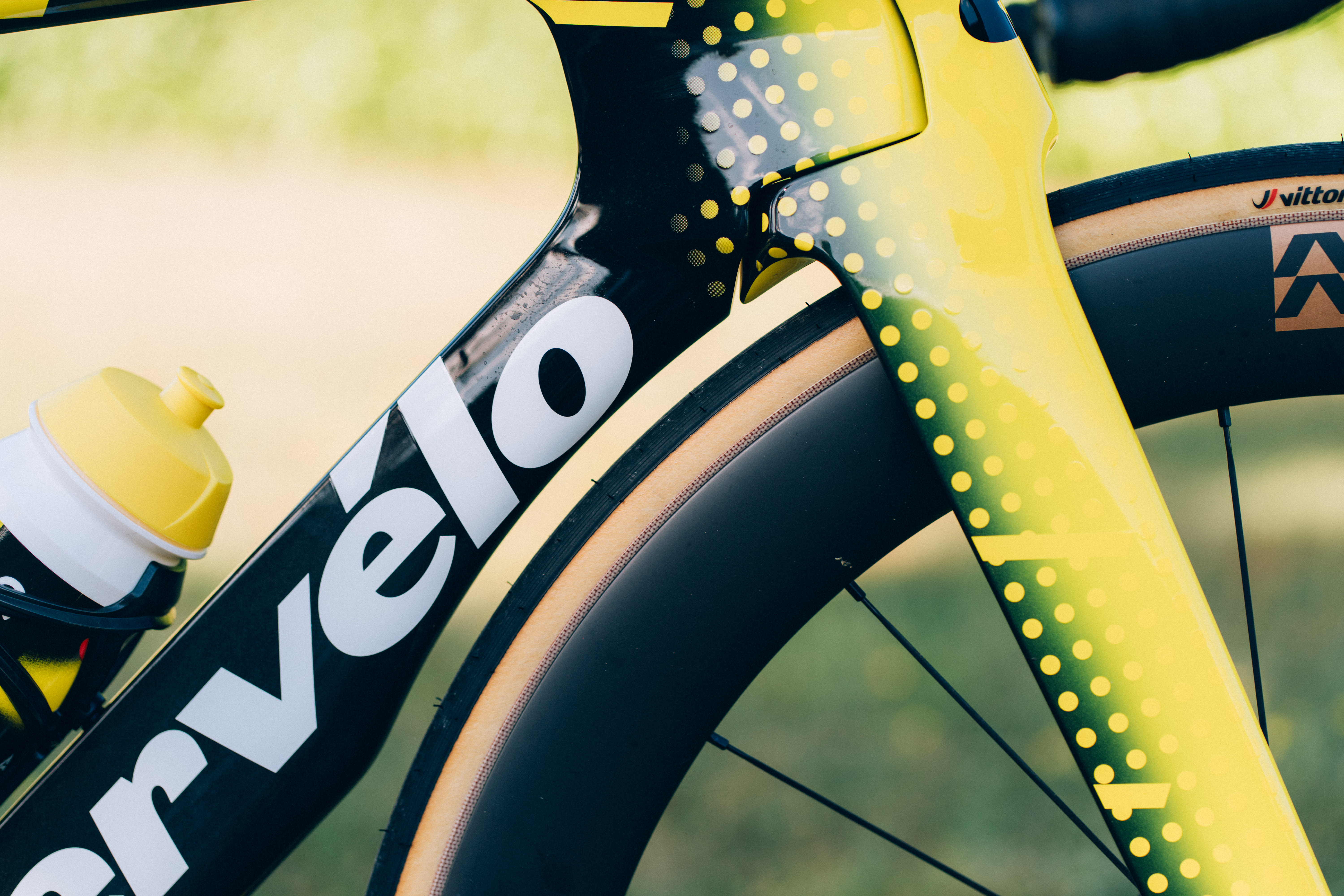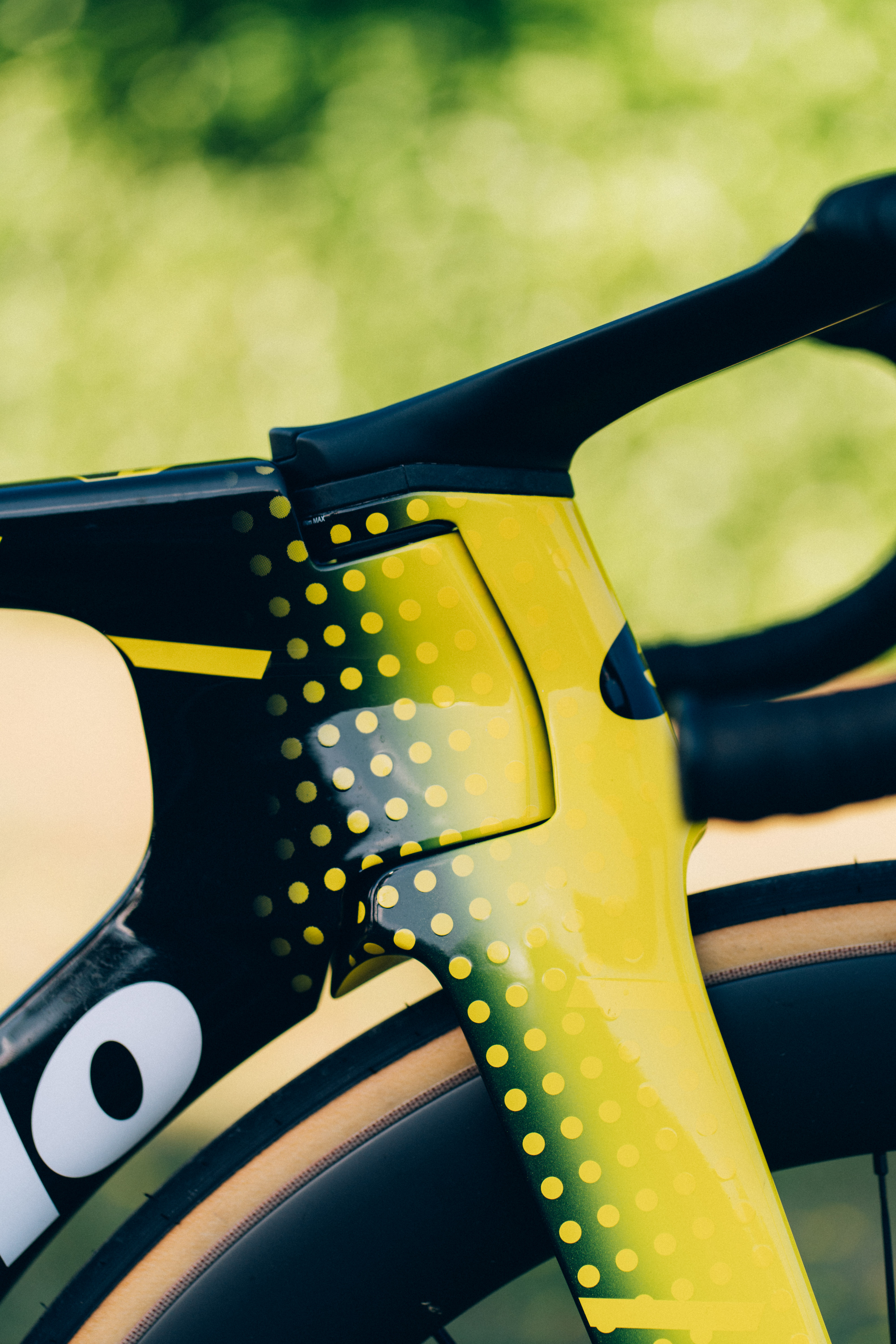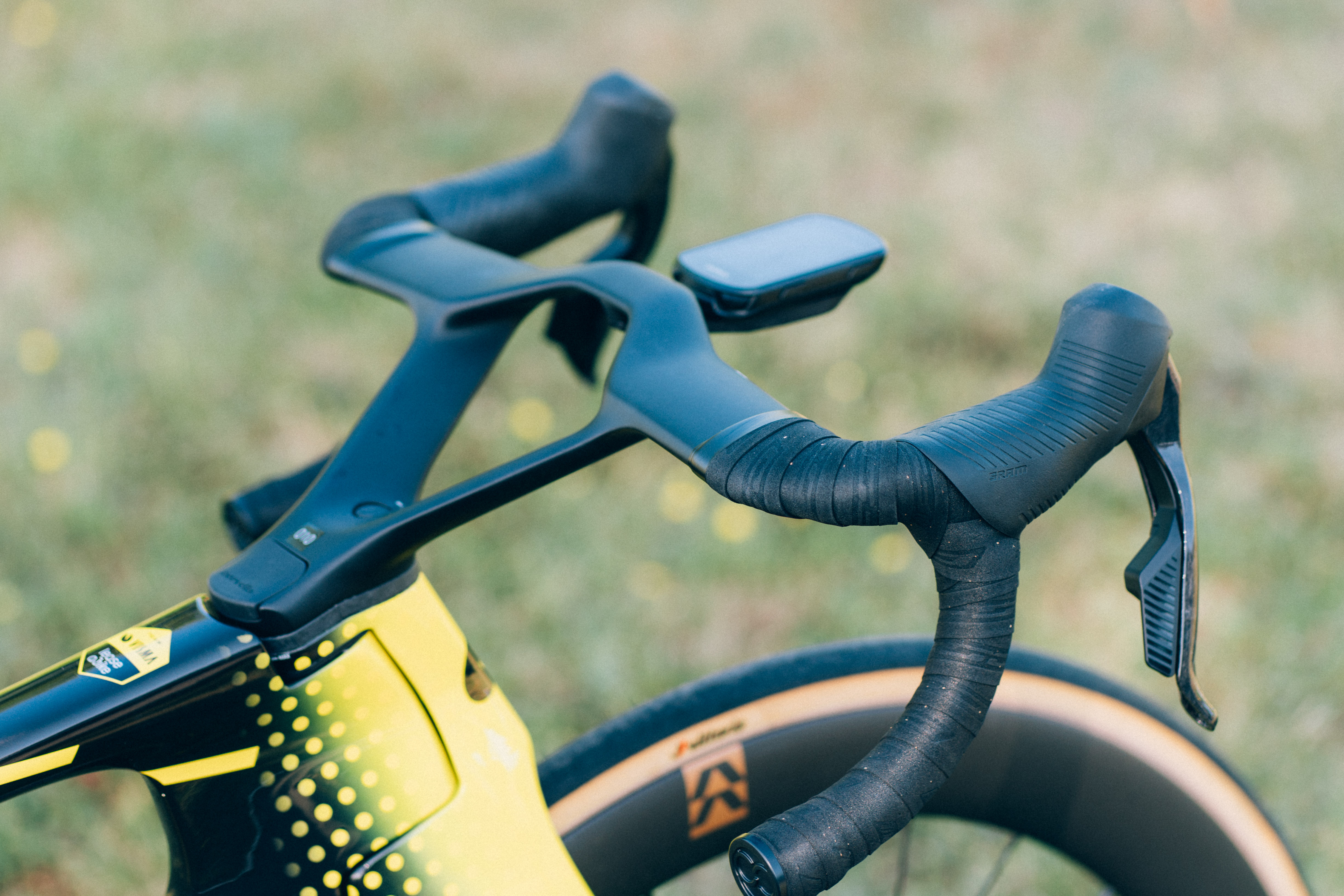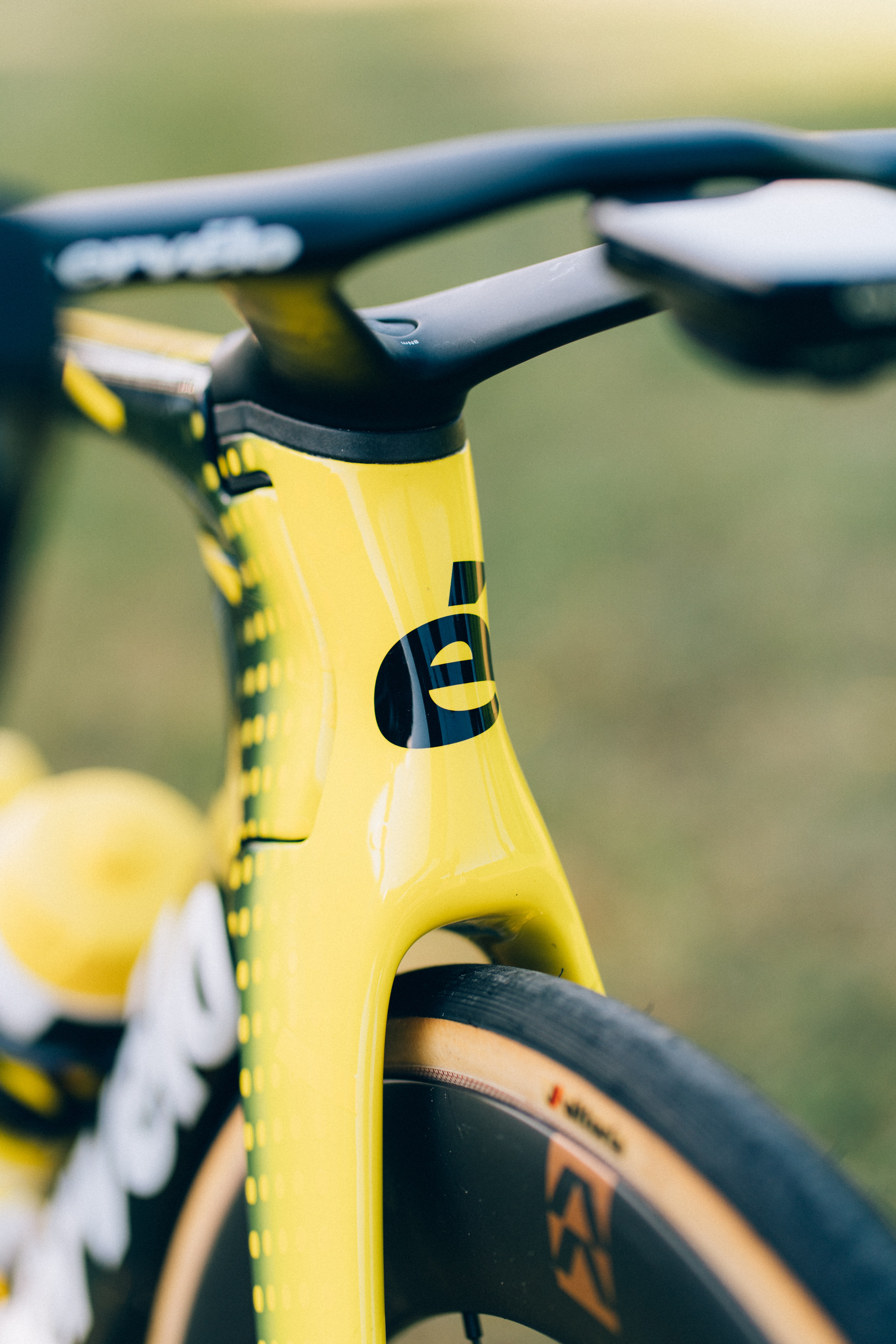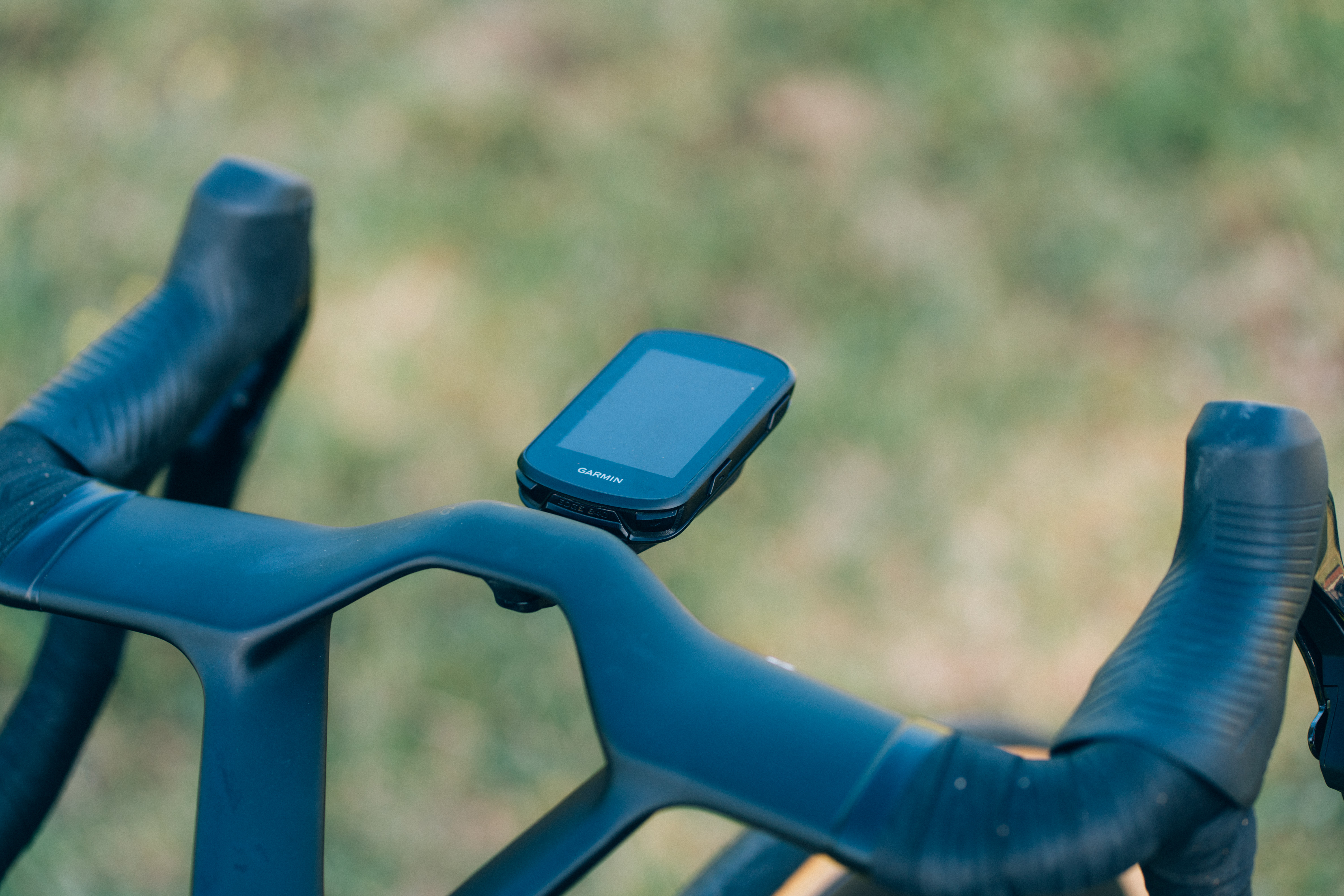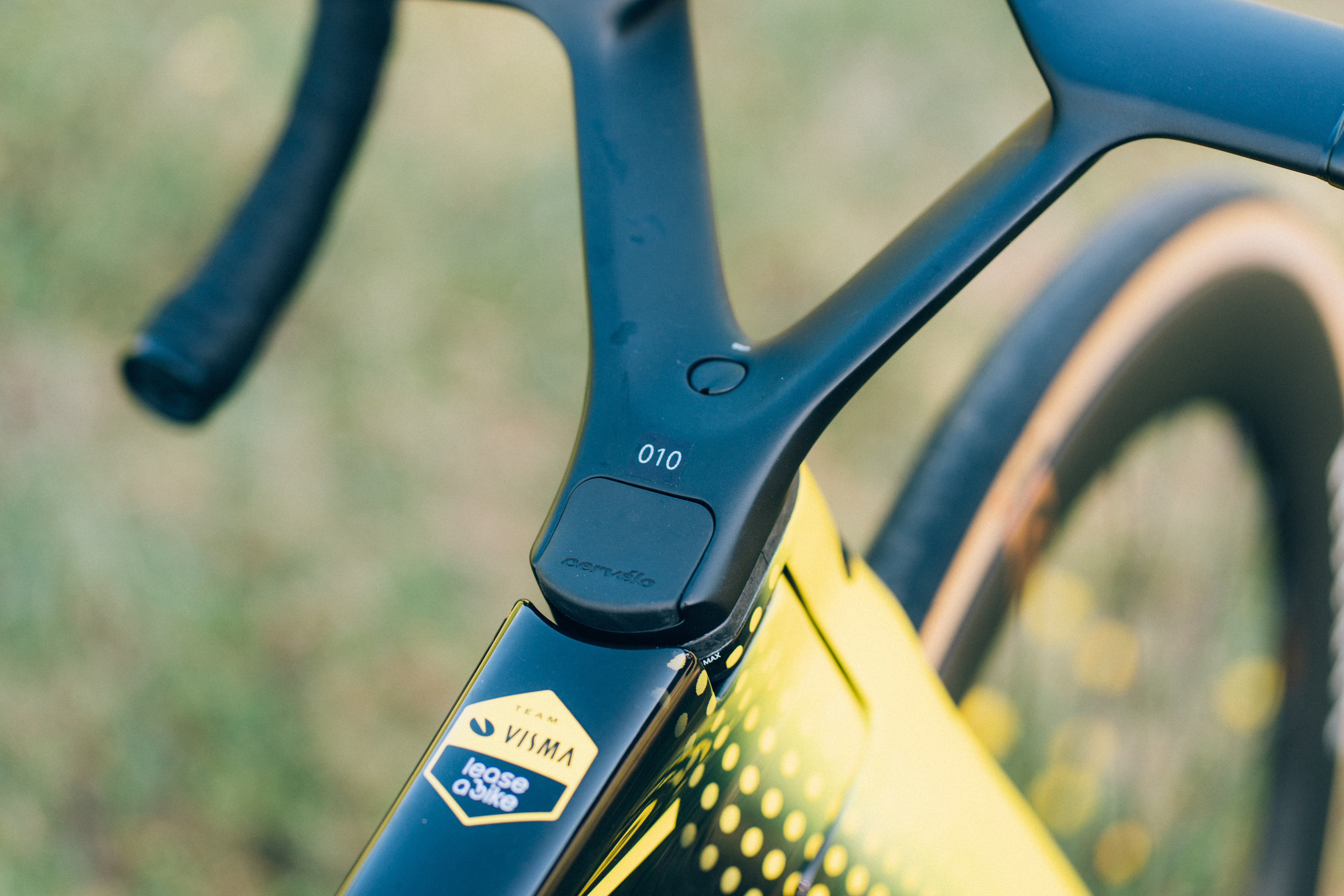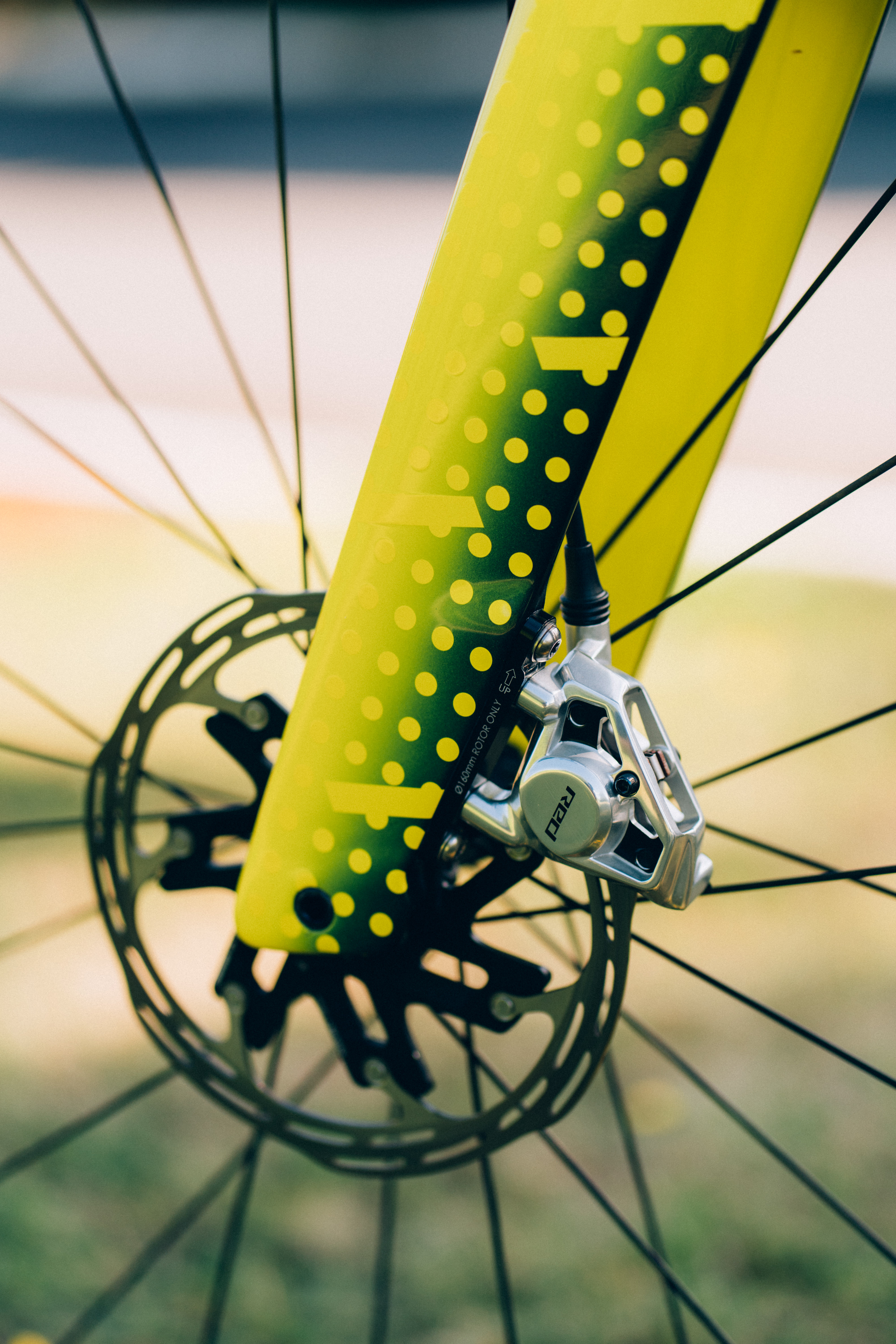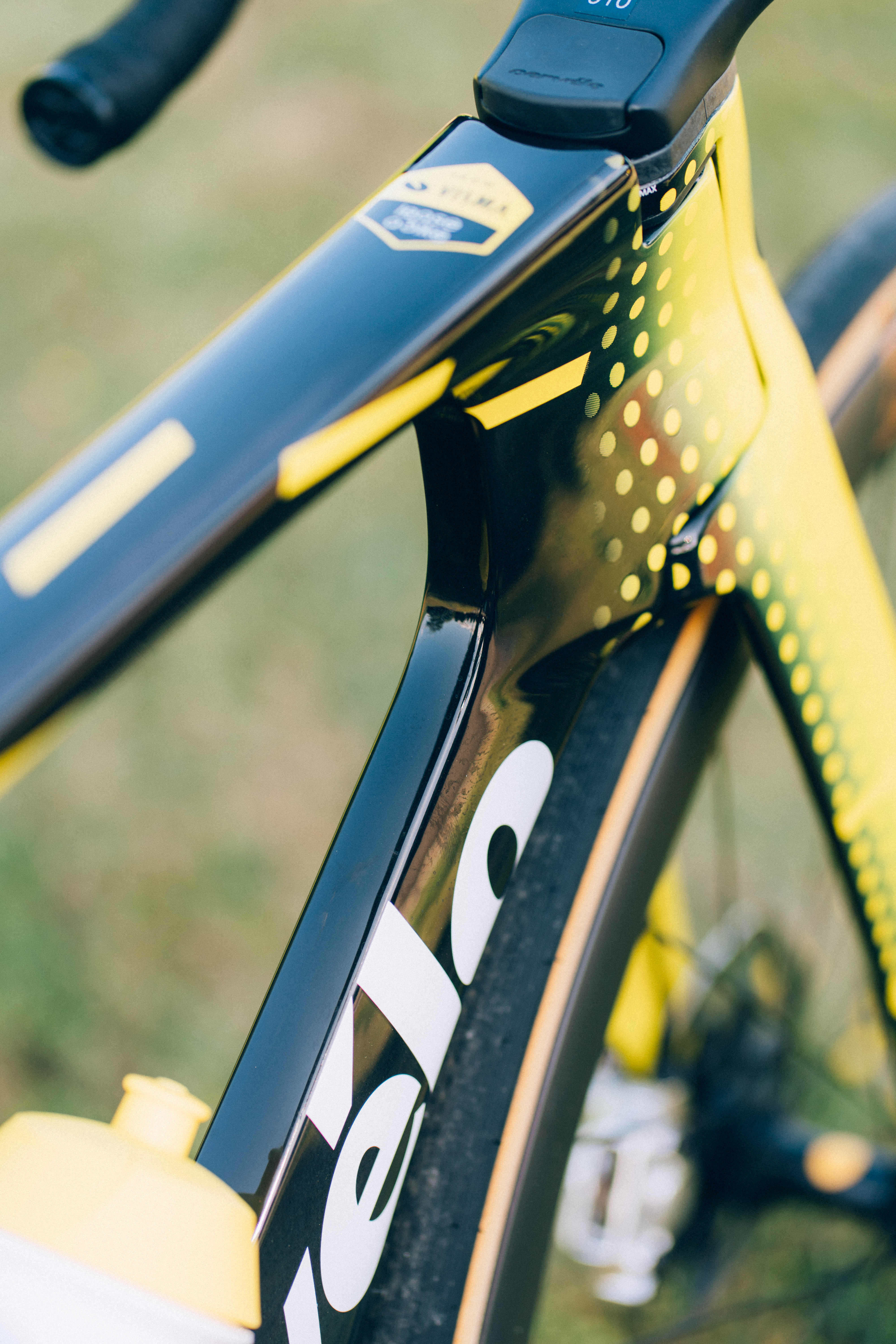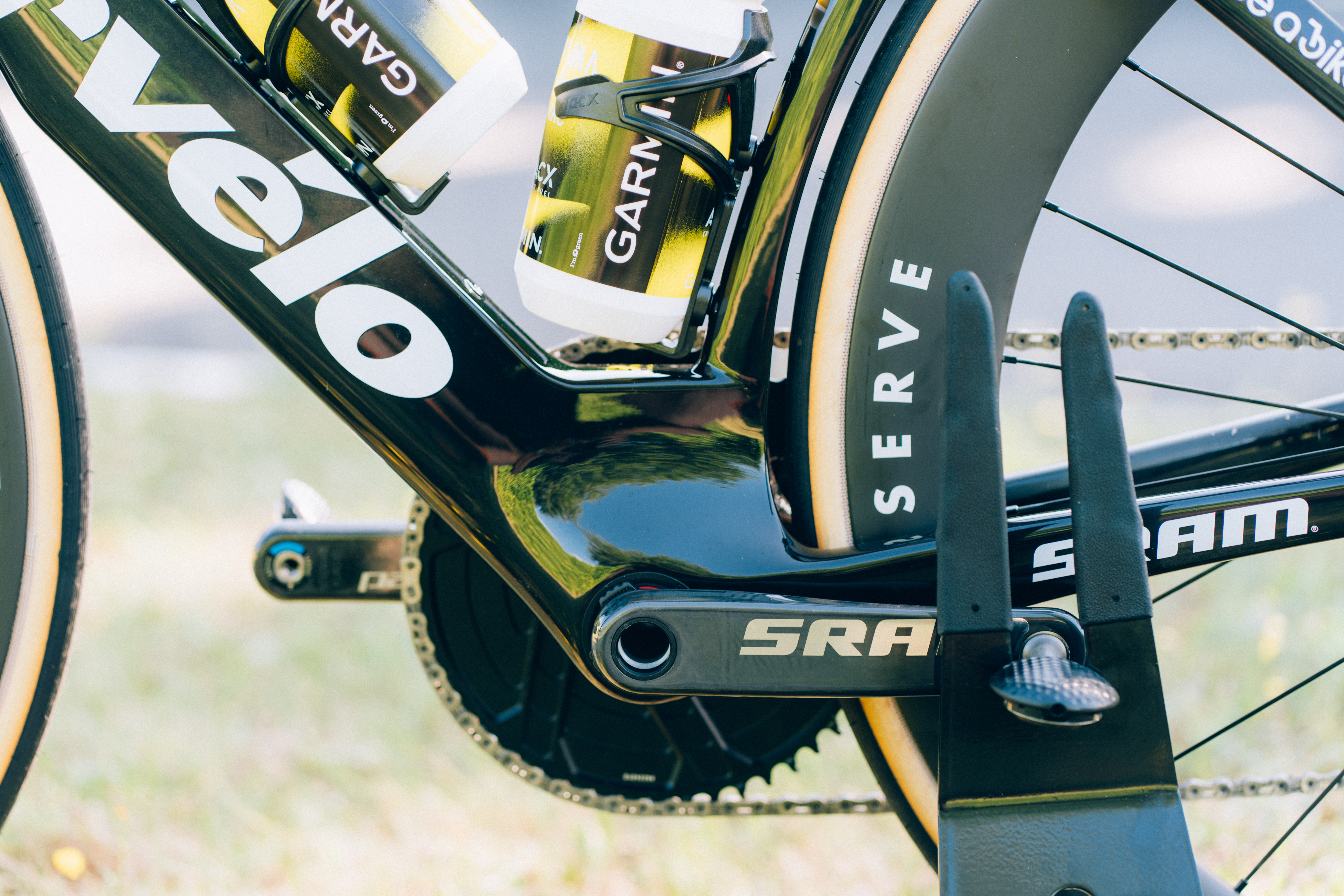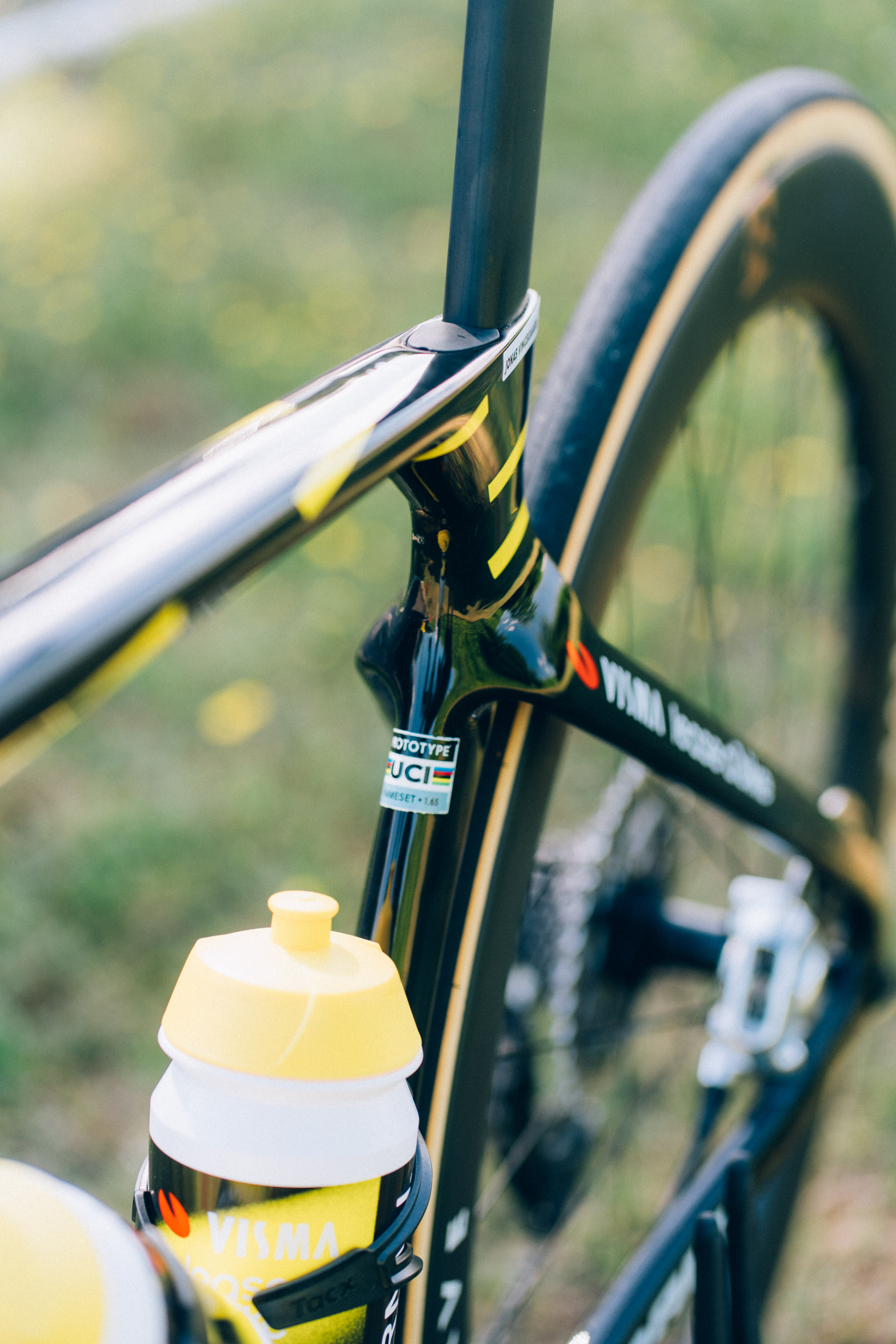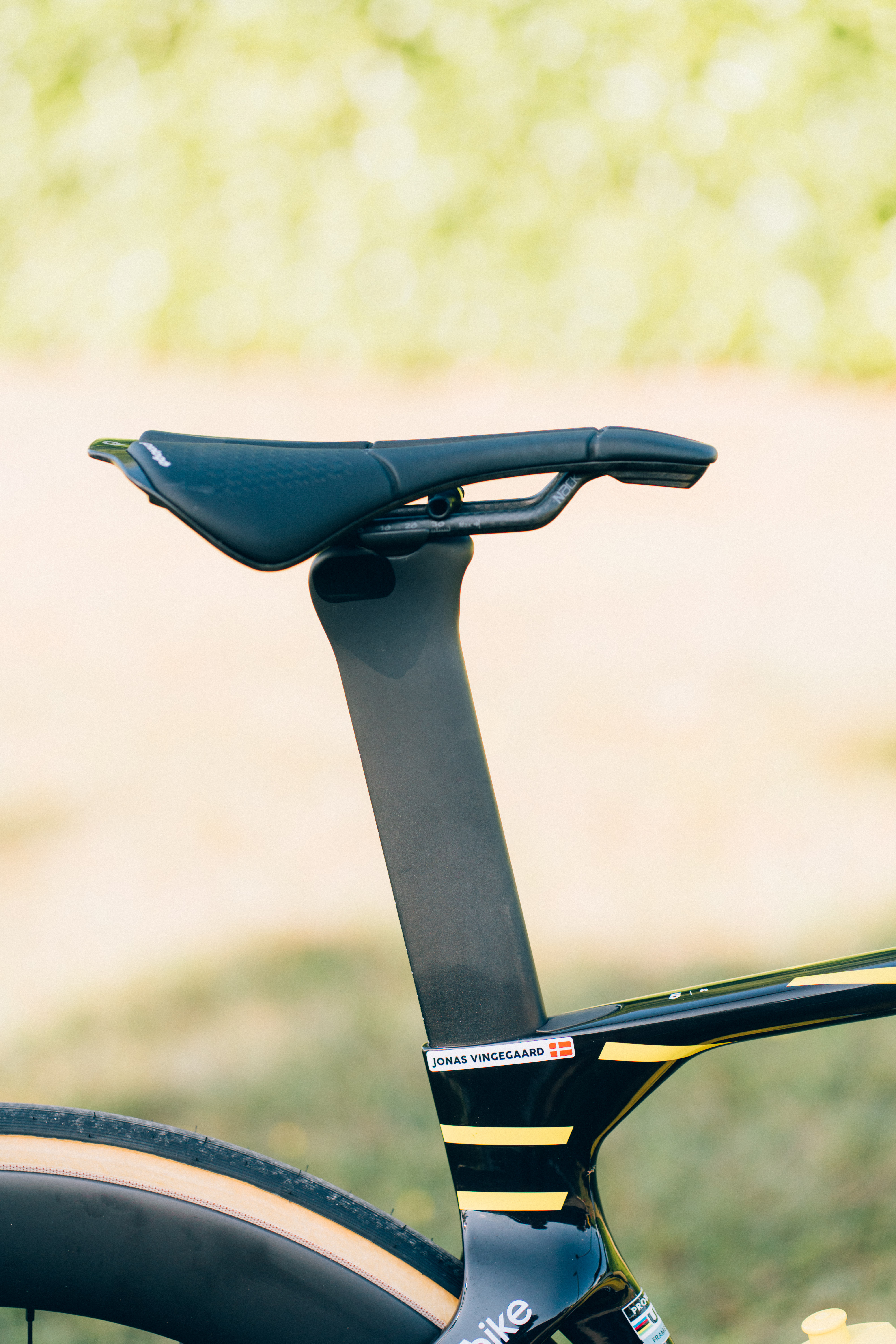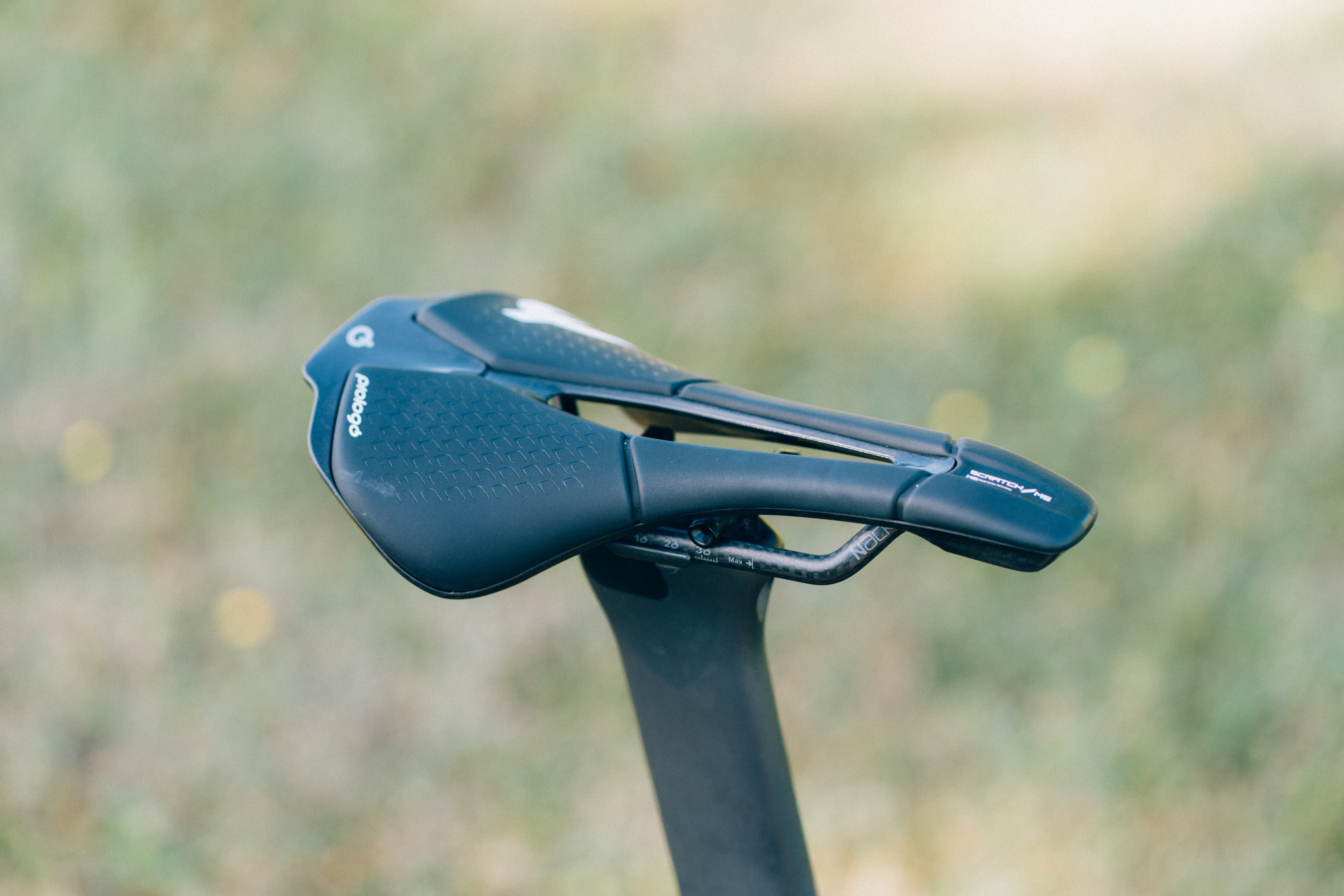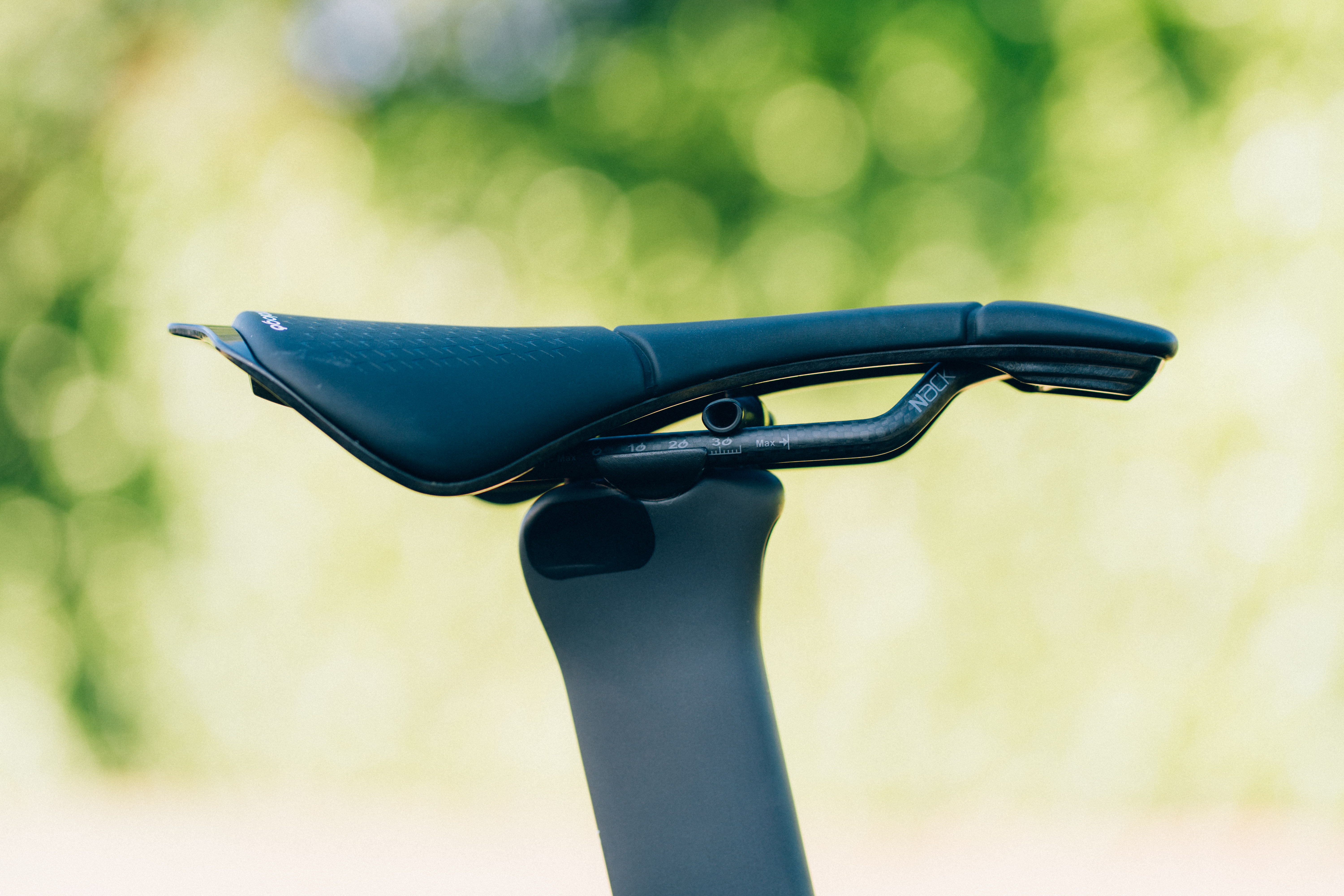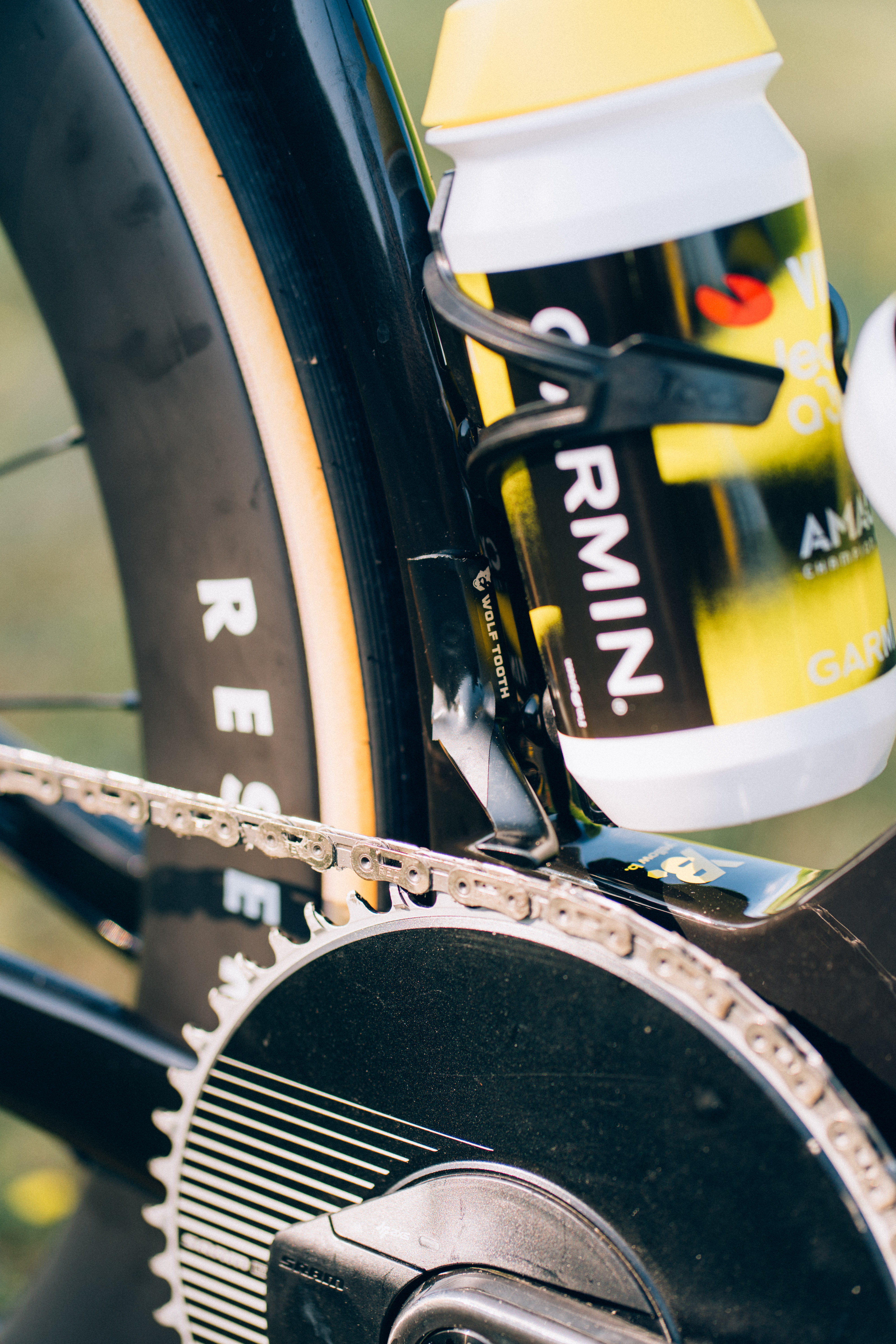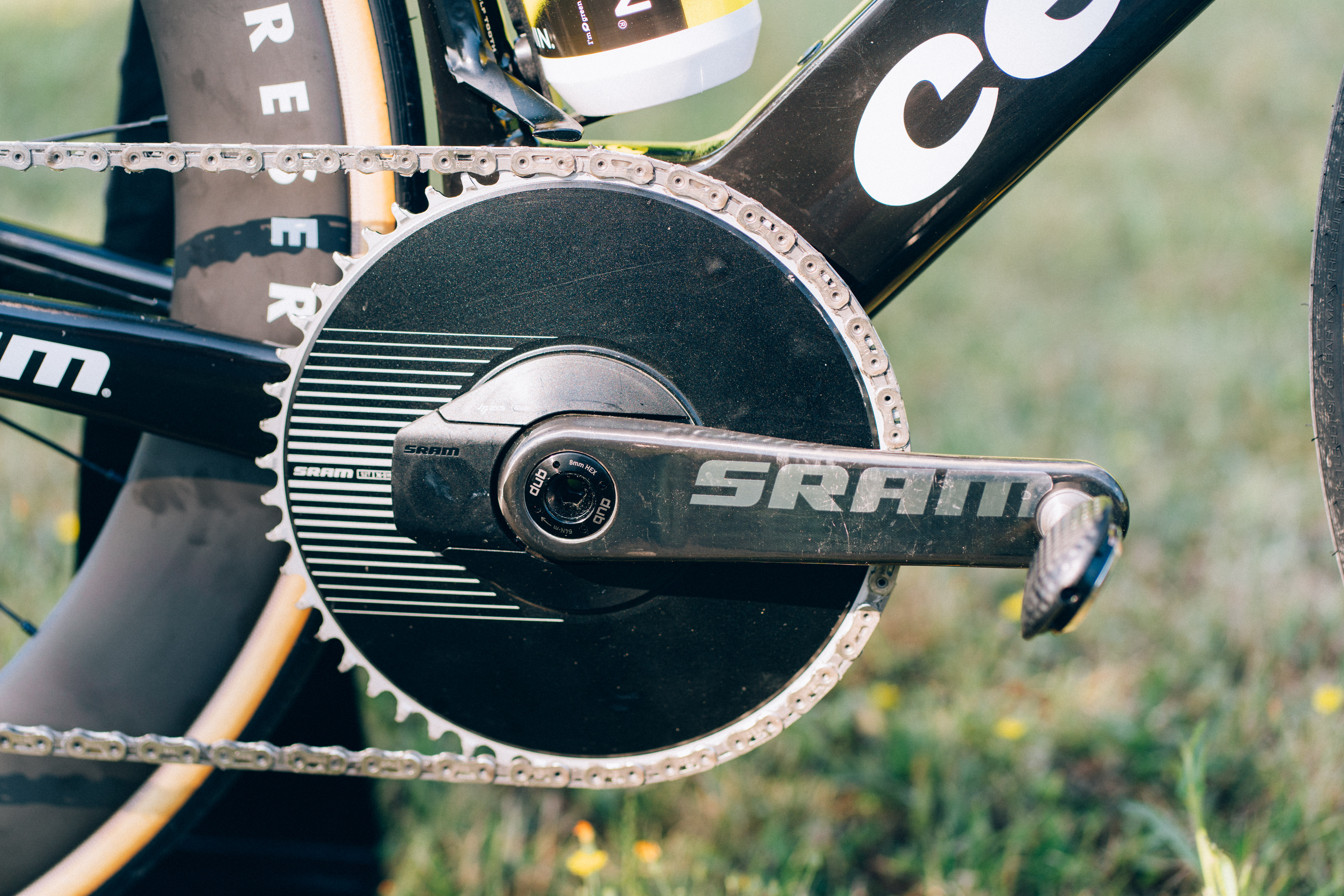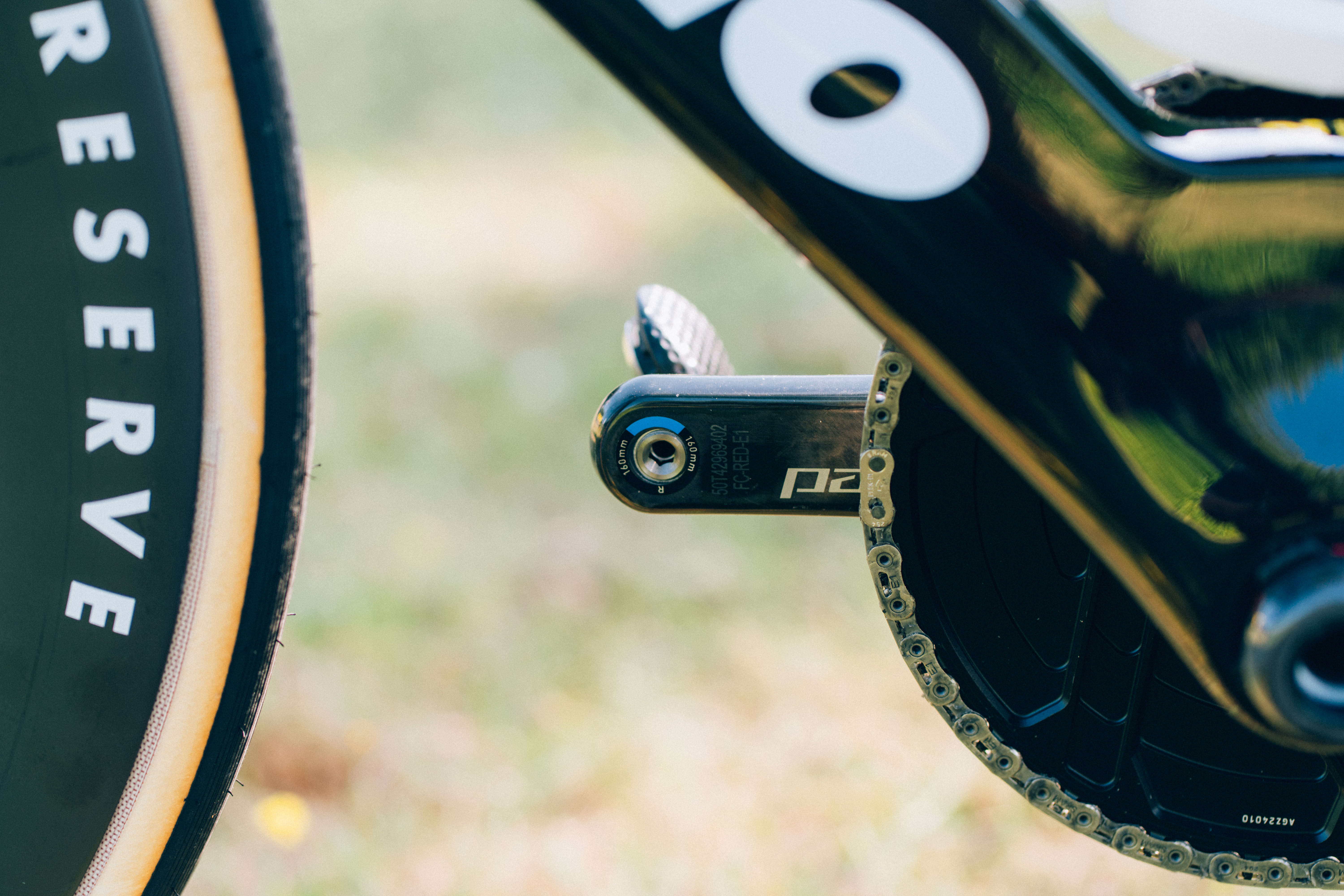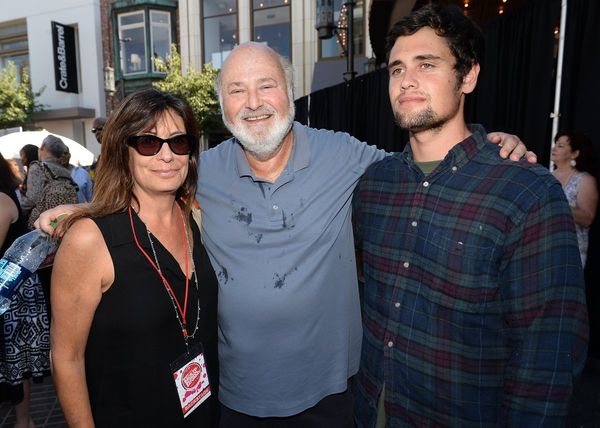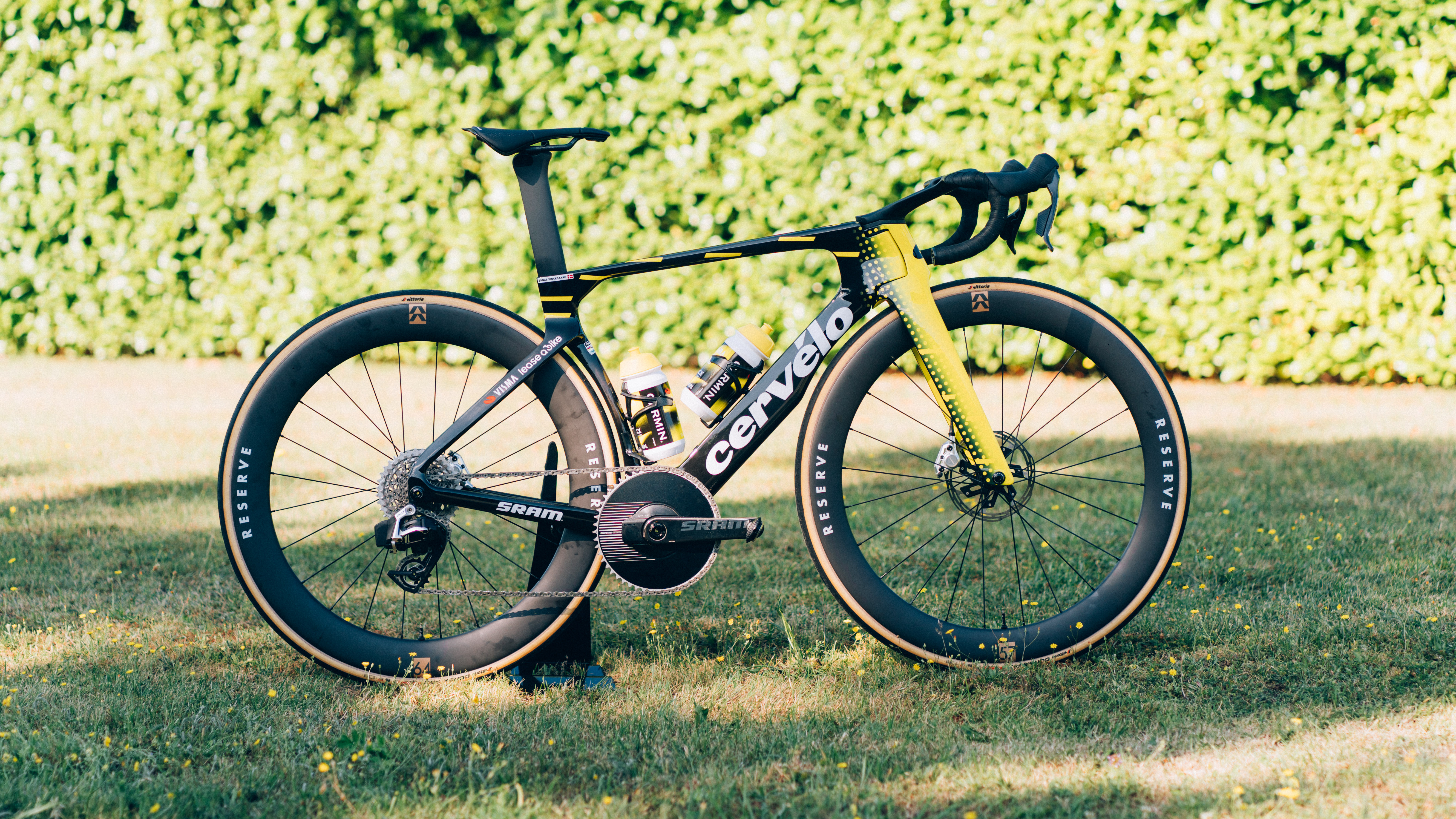
While Remco Evenepoel is certainly well and truly in the conversation to take the yellow jersey at this year's Tour de France, the two big favourites are Tadej Pogačar, whose bike I've already bought you an in-depth gallery of, and Jonas Vingegaard. The latter of the two favourites has already won the race twice, but fell short last year in part thanks to having to come back from some career- or even life-threatening injuries.
This year, Visma-Lease A Bike has two new machines to ride on. In the high mountains, they can call upon a brand new, lightweight Cervélo R5, but for the majority of the race, they will be aboard a brand new, all-aero Cervélo S5.
Visually this bike is very similar to the outgoing model, something I went into when I first saw it at the Critérium du Dauphiné, but now while driving around various team hotels before the start of the race, I got a chance to spend some proper quality time with it, in the presence of some of the Cervélo engineering team.
From what I'm told - bear in mind the bike still has a 'prototype' sticker on it - this new machine is a full 6 watts faster than the old S5, a bike that came out fastest in our own wind tunnel testing at zero yaw (a block headwind).
The cockpit has a lot to do with this, sitting as it does at the leading edge of the machine, but there's also a higher bottom bracket shell, sharper cutoffs for the trailing edges, and wheels designed in system with the frameset.
The wheels, new Reserve 57/64 numbers, are allegedly three watts faster for the same weight as the older models, and these, I'm told, are key to adding higher yaw performance to complement the arrow-straight performance of the frameset.
Don't be fooled by the prototype sticker though, from what I can tell, these bikes are basically production models now in all but name.
Finally, while it may seem like we are chasing smaller and smaller gains with each new machine, I was informed by the Cervélo engineer that we "aren't even close" to the peak of aerodynamics yet, which is good news for my job at least.
- Tadej Pogačar's Colnago Y1Rs
- Remco Evenepoel's Specialized Tarmac SL8
- Matteo Jorgenson's unreleased Cervélo S5
- Geraint Thomas' last ever Tour de France bike
- Tim Merlier's sprint spec Tarmac
